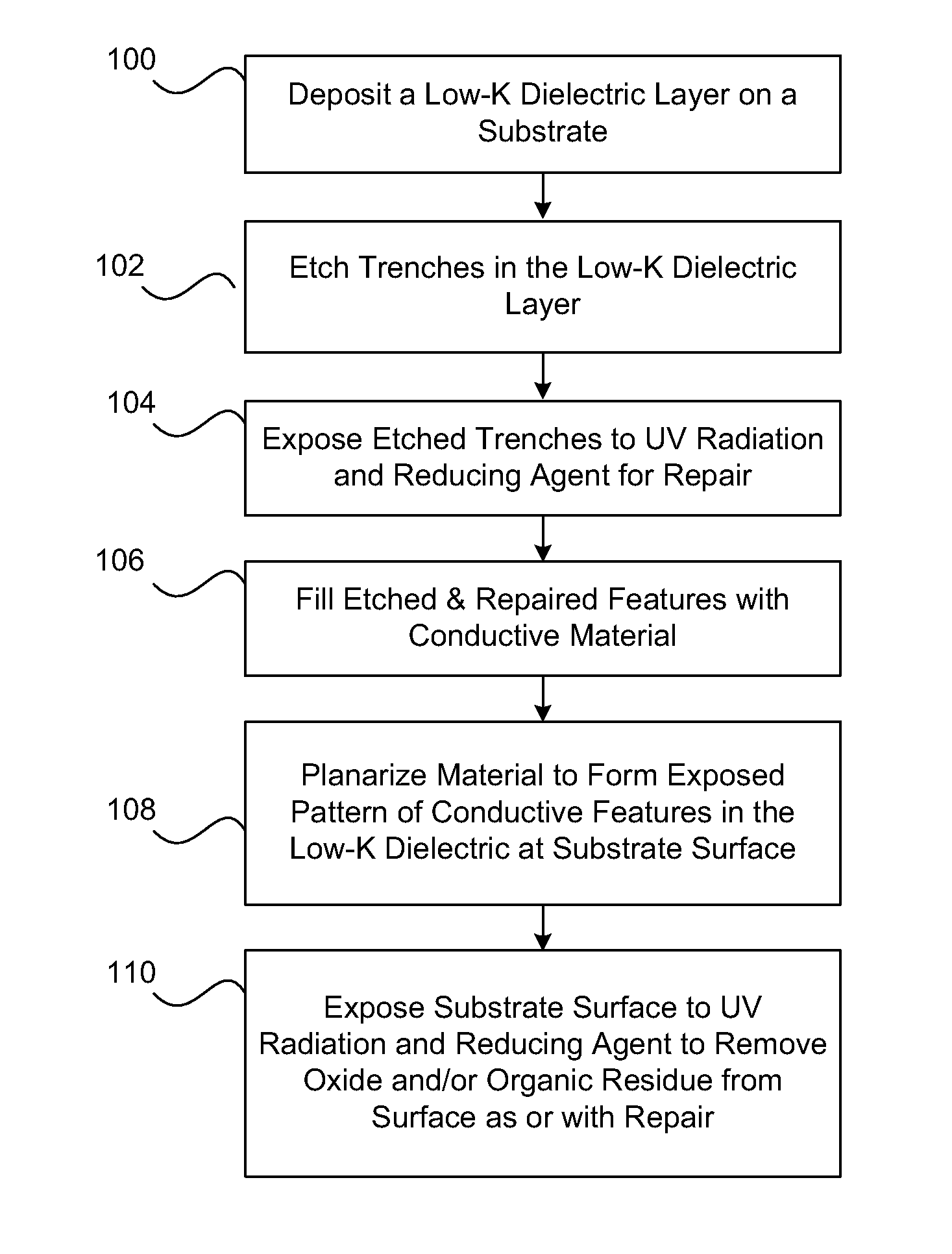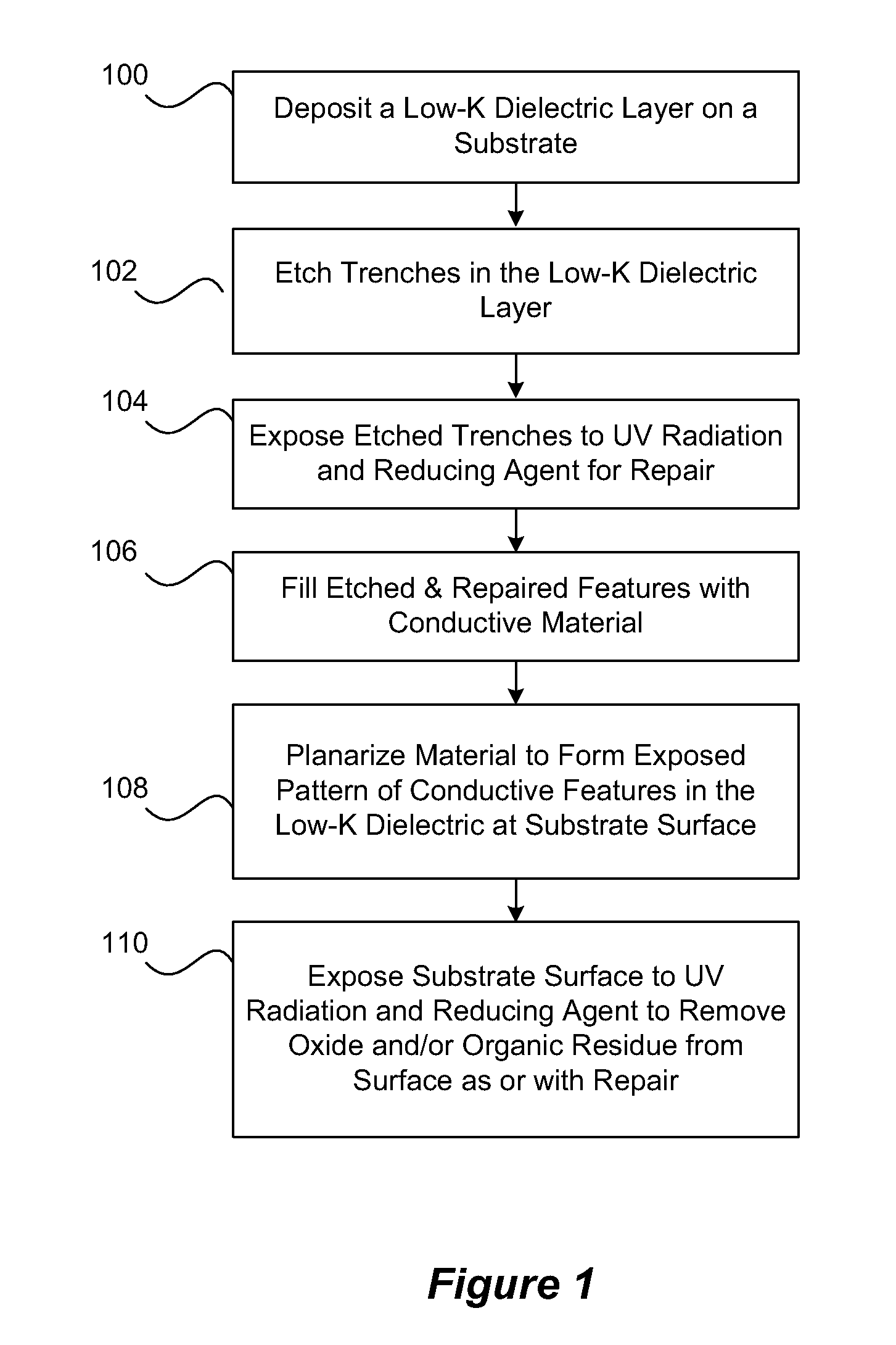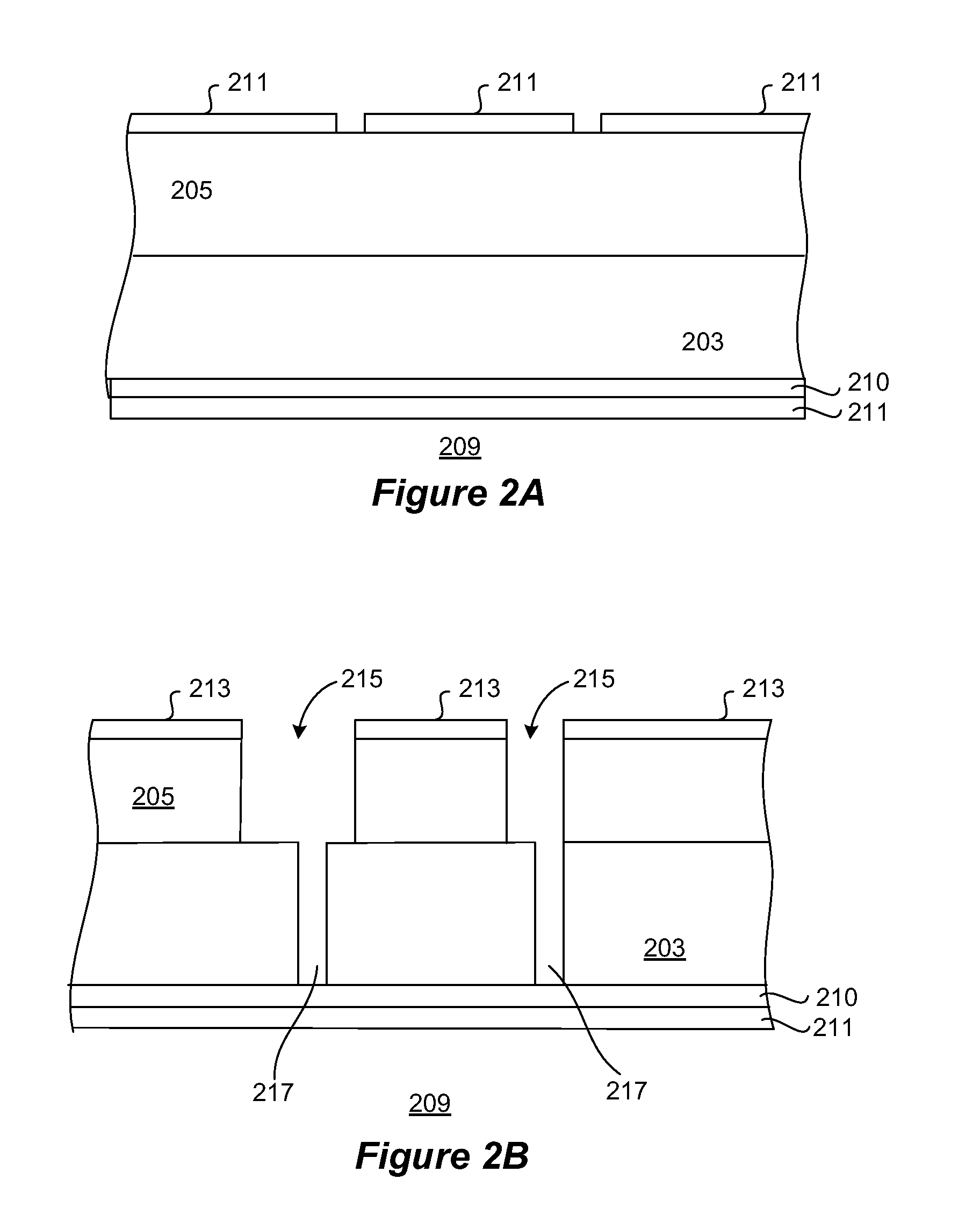UV and reducing treatment for k recovery and surface clean in semiconductor processing
a technology of reducing treatment and semiconductor processing, applied in the direction of cleaning process and apparatus, cleaning process using liquids, chemistry apparatus and processes, etc., can solve the problems of inherently weak low-k dielectric material, affecting and affecting downstream electronic-packaging process and material compatibility, etc., to achieve effective post-planarization surface cleaning and improve the adhesion of subsequently applied dielectric barriers
- Summary
- Abstract
- Description
- Claims
- Application Information
AI Technical Summary
Benefits of technology
Problems solved by technology
Method used
Image
Examples
examples
[0070]The following provides examples of specific implementations of the present invention and performance data in order to give a better understanding of the invention. The invention is, however, in no way limited to these specific implementations.
[0071]Post-CMP Processing
[0072]In one embodiment of the invention, NH3 was used as the reducing agent. NH3 absorbs in the UV range, and can potentially create H radicals which can reduce metal oxide. Both the H radicals and exposure to UV radiation can potentially remove the residual CMP organic residue (C removal). In this example, very high curing pressures (about 600T) were used in order to increase generation of H radicals, but lower pressures can also be potentially used, depending on the amount of metal oxide that needs to be removed.
[0073]In order to evaluate metal oxide (CuOx in this case) removal, about 130 Å of CuO was grown using an oxidizing plasma on PVD Cu. The impact of different cure times, and impact with and without UV e...
PUM
 Login to View More
Login to View More Abstract
Description
Claims
Application Information
 Login to View More
Login to View More - R&D
- Intellectual Property
- Life Sciences
- Materials
- Tech Scout
- Unparalleled Data Quality
- Higher Quality Content
- 60% Fewer Hallucinations
Browse by: Latest US Patents, China's latest patents, Technical Efficacy Thesaurus, Application Domain, Technology Topic, Popular Technical Reports.
© 2025 PatSnap. All rights reserved.Legal|Privacy policy|Modern Slavery Act Transparency Statement|Sitemap|About US| Contact US: help@patsnap.com



